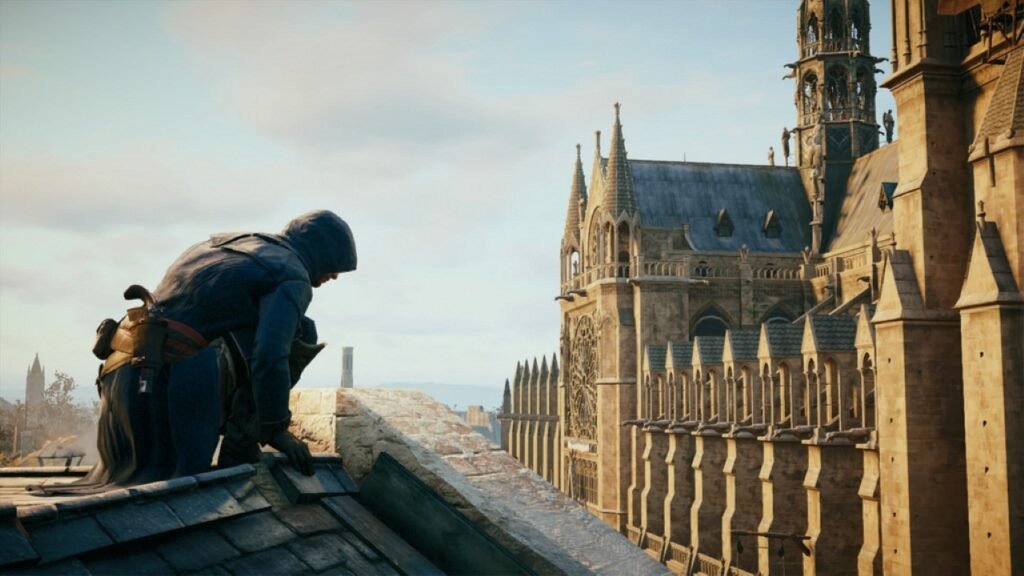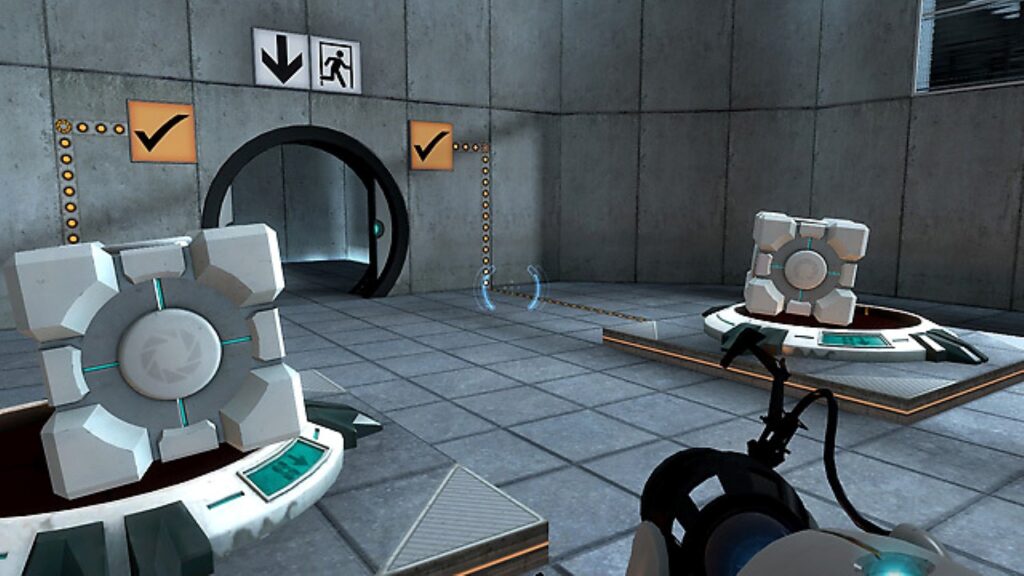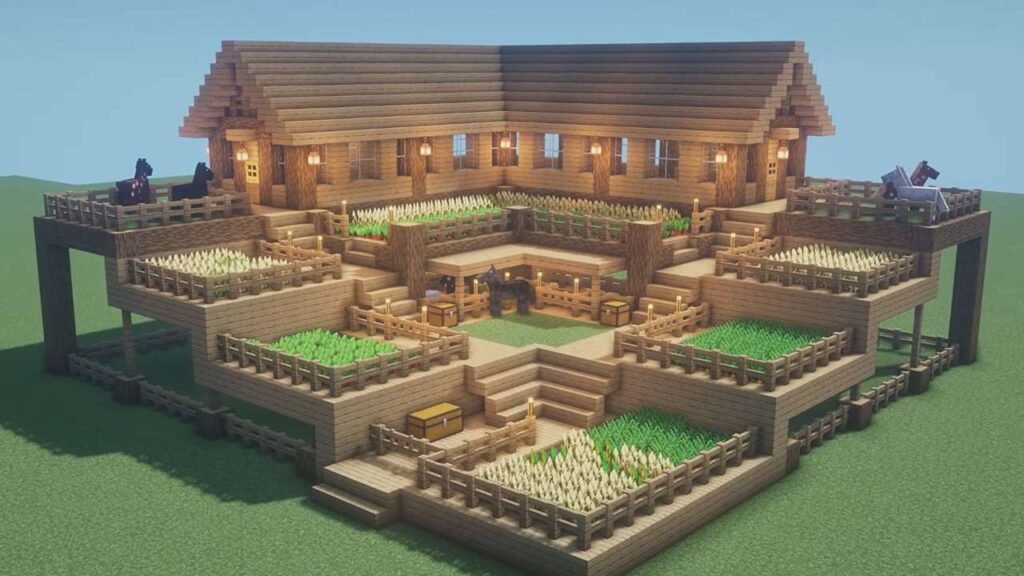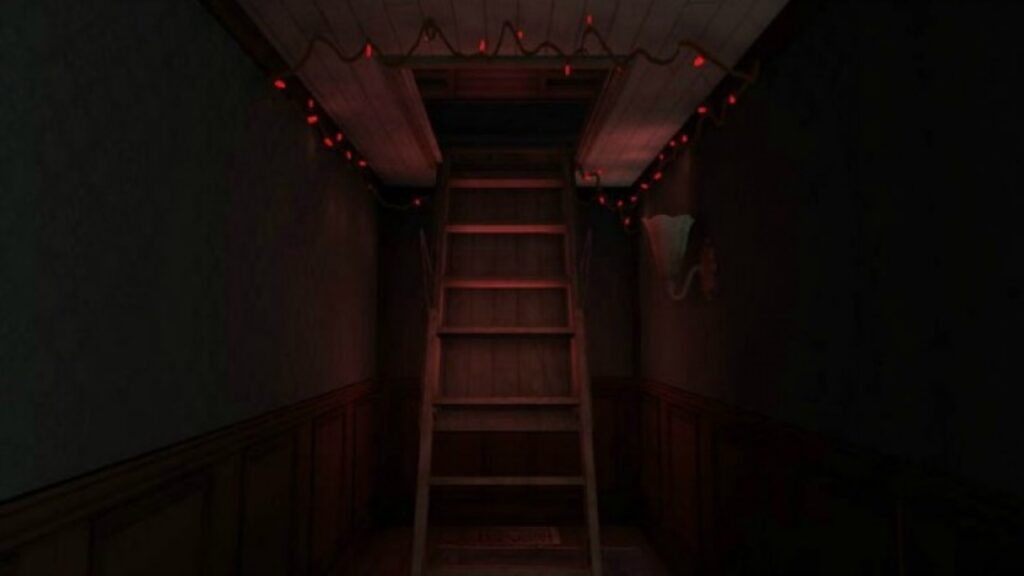Table of Contents
Introduction
From city-building simulation games like the sim city series to action roleplay games like Cyberpunk 2077, we have all played at least one of these games, and don’t we love them? From relieving stress to improving concentration and strategic skills, these games have given us all!
Hold up, why are you reading about video games on an architectural weblog? Well, there’s an unimaginable connection between architecture and video games!

Gaming Architecture:Connection Between Architecture And Gaming
From spaces to materials and even the use of natural light, everything that matters in real-world architecture also influences the gaming world’s graphics and visuals. Gaming Architecture in video games, sometimes subtle and other times it is pretty obvious, is like a secret language. It affects the player’s viewpoints and movements even though they don’t notice it! Architects along with game designers use this secret language to generate a sensational experience while influencing our movement and feelings.
Gaming Architecture sets boundaries that limit the movement of characters, weapon influence, or vehicles. Architecture is used to hide things like treasure, weapons, ammo from the player or can be used to hide from enemies. Obstacles and traps must be laid out throughout the landscape map of computer games, which can be overcome by observation, logic, or by hand-eye coordination. Exploration provokes the players to understand the virtual space they’re moving through.
With Great Power Comes Great Responsibility!
Got you there Spidey fans! Well for now let’s circle our focus back to the role of an architect in the gaming world. From programing codes to building codes, both game developers and architects put in a lot of effort to build a perfect gaming experience for the players! The role of an architect in video game designing is quite similar to the role in real-world designing.
Architecture in video games is more than just the backdrop of a virtual city or realistic replicas of cities from the real world. The gaming world is fictional, giving the freedom to design spaces amplifying upon the theme/ narrative of the game. From moving things to designing impossible structures, that may not make sense in the real boring world, nothing is impossible to express what the designers want to.

The end-user AKA the player pays heed to the game’s environment for guidance. It’s easy to get lost when a player doesn’t know where to go next or what to do! Wall graffiti, imposing structures in the background, or lighting tricks can be a huge help in such cases. Whether it’s for guidance to the next step or just to pause for a while to admire the seamless beauty of the environment, video games do require architectural accuracy to buzz.
From considering the amount of natural light entering the rooms to the feeling of the space, everything is designed by the architect as per the game’s requirements and genre. You won’t find many similarities between a fun adventure game and a horror game. This is where an architect plays their role! Architecture speaks to us in four ways: SPACE, CONSTRUCTION, MATERIAL, and LIGHTING.
Space
Architects can control minds through space! The space in a room decides your perception and movement in real life. The same architectural psychology is portrayed in the virtual world as well. Just like in the real world, in video games too, the amount and type of space of a room/area decide your movement and actions!
The concept of compression and expansion is used to control the player’s movement. Long corridors play with the concept of compression encouraging the person to keep moving and as the space expands into larger areas, the concept of expansion, the people tend to meander. Similarly, in the virtual world, long corridors depict moving towards a big space. Therefore, corridors in games don’t have tasks. When walking into a suspiciously huge room, the player knows that something is about to happen! It is the boss arena where you might see enemies popping out and need to fight them!
The Ashtray Maze in Control is a well-defined example of compression and expansion. The player, in this level, is funneled through a narrow hallway, following the concept of compression, until it expands into a larger space where you fight a bunch of tough dudes! The Ashtray Maze is not in the same brutalist style as the rest of the spaces in the game! The spaces in control, control you! How big a space is can tell you how it’s meant to be used. But there’re plenty of other meanings built into the environment.

Construction
Environmental storytelling is the skeleton of video games! From meaningful graffiti to various vertical as well as horizontal elements, all play major roles in storytelling for the game. From putting stuff to tell what happened here to using elements, in a way to depict the culture, architecture can do it all.
Final Fantasy VII Remake
In Final Fantasy VII Remake, the player visits the Shinra employee housing on top of the sector 7 plate. The houses are blocky and the road and a huge pipe all point and run to the Shinra factory. This shows that in Midgar, Shinra is all that matters.

Dark Souls
Anor Londo in Dark Souls shows thoughtful construction in the gaming world. One of the architectural features that take Anor Londo to the next level is the staircase. There are two different types of steps in the gameplay! The steps on the left and the right are normal sized but the ones in the center are huge. This is because Anor Londo was shared by both humans as well as giants and the architecture reflects that! This difference just exists for storytelling as there’s no mechanical difference when the player moves up any of the stairs!

Material
We have an inborn association with materials and the memories of touch influence our emotions. Even though games are largely incorporeal, game designers use materials the same way an architect might: to evoke feelings.
In Portal, the materials tell a story of discomfort and negligence. Midway through the game, the sleek concrete and glass test chambers give way to rusted metal and gross linoleum. It’s literally falling apart.

Light
If you’re a Portal player, you may have noticed the difference between the test chambers and the back-end in the game. The light! Light can be used as practicality, art, and even have a psychological effect. The very lack or presence of light can tell a story. Game developers love playing with lights. Lights can be used as guidance in the game to indicate where to go next. The presence of light makes the environment feel safe whereas as the light diminishes into complete darkness, it keeps on creating an unsafe, eerie sense.

Gone Home is set in a cozy northwest house with spacious rooms and warm materials. Seems like a normal house for a completely normal family! But the very presence of dark rooms where you have to enter and turn the lights on unaware of the paranormal dangers lurking in the house makes it terrifying. The designers played with light to convert a cozy-looking house into a haunted house!

Examples
Some of the most famous games really show the beauty and importance of architecture and are favourites for architecture and gaming geeks!
Minecraft
Of course, cannot talk about gaming and not mention this legendary virtual world with so many memories of our childhood! As famous as this game might be for everyone, it does have a special place in every budding architect for sure! The game allows the players to explore an open-world universe set in a primitive world without any limitations. You can create structures with blocks of varying materials and show off your archi skills.

Gone Home
As discussed earlier, the sweet little cozy family house converted into a mysterious haunted house with the magical touch of lighting! The horror-esque theme incorporated in this vintage architecture gives the perfect horror gaming vibes!

The story revolves around the protagonist, who explores the dark history of her dead relative Oscar. The architecture is simpler than the ones we see in the SimCity. While exploring every nook and cranny of the majestic antique mansion, one can notice how even the tiny rooms have an impact on the player’s emotions!

The Sim City
The sim city series is a virtual dollhouse where the player can design the life of the characters! Both architecturally as well as literally! The player not only can mold all the aspects of the character’s life from profession to friendships but also has the freedom to design the whole city!
Calvino Noir
If subtle and retro is the style that speaks for you, then this game is your thing! The game is set in a 1930 European society. The game seamlessly merges classic architecture and noir erecting an extremely mysterious and attractive cityscape. From intricately sculptured towers hallways brightening up only on the player’s presence, you experience it all in this game.

There’s a lot more scope for gaming architecture in our country. Architects who are fond of gaming can contribute a lot in this field and create what they love! So to all the budding architects who are also gamers, GO LITTLE ROCKSTAR!




